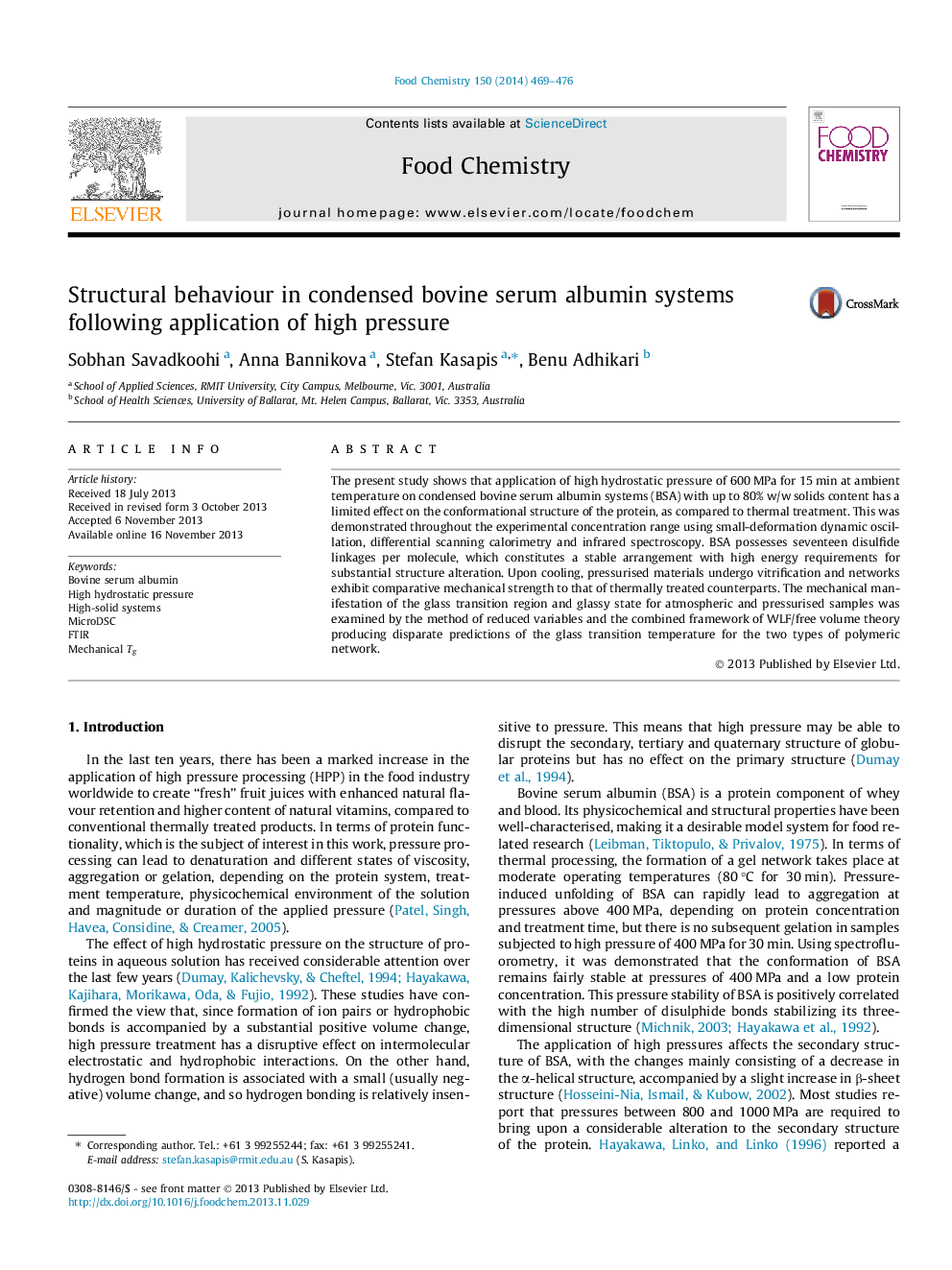| Article ID | Journal | Published Year | Pages | File Type |
|---|---|---|---|---|
| 7599075 | Food Chemistry | 2014 | 8 Pages |
Abstract
The present study shows that application of high hydrostatic pressure of 600Â MPa for 15Â min at ambient temperature on condensed bovine serum albumin systems (BSA) with up to 80% w/w solids content has a limited effect on the conformational structure of the protein, as compared to thermal treatment. This was demonstrated throughout the experimental concentration range using small-deformation dynamic oscillation, differential scanning calorimetry and infrared spectroscopy. BSA possesses seventeen disulfide linkages per molecule, which constitutes a stable arrangement with high energy requirements for substantial structure alteration. Upon cooling, pressurised materials undergo vitrification and networks exhibit comparative mechanical strength to that of thermally treated counterparts. The mechanical manifestation of the glass transition region and glassy state for atmospheric and pressurised samples was examined by the method of reduced variables and the combined framework of WLF/free volume theory producing disparate predictions of the glass transition temperature for the two types of polymeric network.
Related Topics
Physical Sciences and Engineering
Chemistry
Analytical Chemistry
Authors
Sobhan Savadkoohi, Anna Bannikova, Stefan Kasapis, Benu Adhikari,
